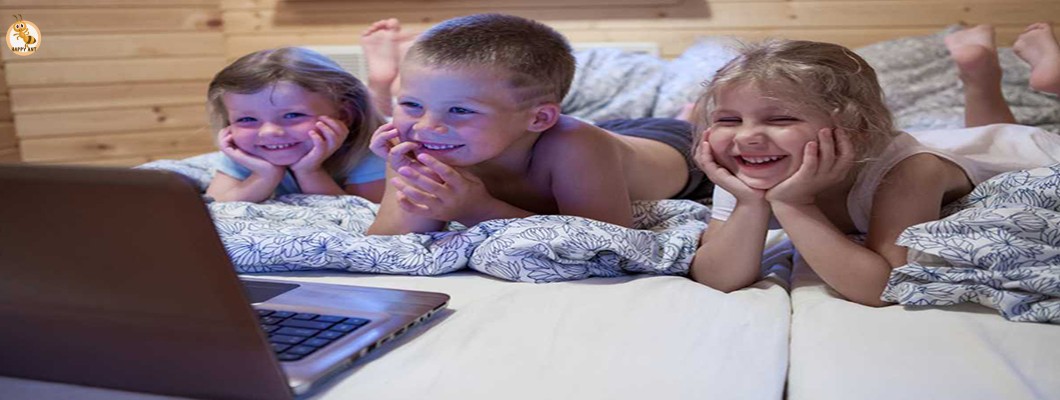
The role of cartoons in social culture
is very important. Animation and caricature as an educational tool and
presentation of culture. Children are interested in watching cartoons from the
age of one year. Cartoon is a powerful tool in which patterns, attitudes,
values, barriers and intellectual and emotional data that form the framework of
each person's life are displayed. Cartoons help children's educational
development and learn interpersonal issues such as family relationships,
friendship, communication and play.
The effect of cartoons on child growing
Scientists agree on the fact that cartoons have a positive or negative effect on children.
Positive effect: Among the positive effects, the cartoon has a role to help children's education, which includes: information about the world and interesting entertainment. Cartoons teach children the rules of behavior in society (respect for adults, teamwork, etc.). It strengthens their vocabulary. (The child can master that language while watching cartoons in a foreign language). Also, cartoons help to discover the world and the environment around children. Many cartoon characters, healthy life characters, have many positive qualities and children often imitate their heroes.
Negative impact: More research has
been done to clarify the negative effects of cartoons on children's behavior.
Scientists mainly detect health damage, violent behavior and sexual symptoms.
Children who watch violent cartoons become aggressive, disobedient, cruel and
angry. Cartoons help develop children's imagination, but the negative effect may
be that children can remain in the fantasy world for a long time.
Childhood and the role of cartoons in the formation of social culture
A person's childhood is formed according to the conditions of his society. However, childhood today is based on technology. The new age has been greatly influenced by ubiquitous means of communication. Television plays an important role in expressing the culture of a society. It attracts children's attention using a multi-colored and animated world, visual and auditory stimuli, as well as a wide range of stories. In addition, cartoons provide an attractive and suitable environment for presenting the culture of a society to children. Also, cartoons allow children to enrich their dream world and improve their vocabulary. and learn new games. Then these developments are reflected in children's behaviors and become permanent behaviors. This, in turn, makes children learn the language and behavioral traditions, cultural and moral values of a society through cartoons.
As important factors of cultural transmission, cartoons are instructive fields. To what extent and how each cartoon film presents the cultural values of its country is very important. Things such as: family relations and social affairs, traditional clothes, specific meals of a culture, use of language, national signs and rituals, social and religious symbols and rituals, and songs and dances through cartoons. It is taught as an attractive and favorite resource for children.
Some of the effects of cartoons on
children
The concept of family
The concept of family is one of the
most basic institutions of a society. In some cartoons, family relationships
are not limited to the relationship between mother, father and children. On the
contrary, this family also includes grandparents, which generally depicts an
extended family with strong family ties. By watching these cartoons, the
concept of family is formed in the minds of children.
traditional dress
Traditional clothes are among the key
elements that reflect the culture of a country. In almost every country, the
clothes and colors used in women's and men's clothing also parallel the living
conditions of the nations, in addition to providing information about the
social structure. Therefore, the display of clothing design and the colors used
in it is shown through cartoons as an international platform, and this clothing
design and the type of clothing affects children. For example, after a few
years have passed since some cartoons aired, the clothes of cartoon characters
can still be found in toy stores.
Special culture food
Traditional foods are another key component of culture. The wide variety of meals varies from region to region. The use of these foods in cartoons helps the child to get to know the traditional foods in the society's culture. It is even an opportunity to see and learn how to prepare these foods. In this way, it encourages children to consume these foods. Also, children who refuse to eat, their desire to eat increases. These cartoons take every opportunity to emphasize the importance of eating.
Result
Research shows that children are more
attracted to cartoons than to learn from traditional sources, mainly because of
the cartoon scenarios, audio-visual effects, and colorful images. Scientists
have proven that children not only learn from cartoons, but also retain and
imitate the behavior of cartoon characters due to their cognitive abilities.
Therefore, it is very important to watch and communicate with cartoons that can
teach children the right and appropriate ways of life and society.

Leave a Comment